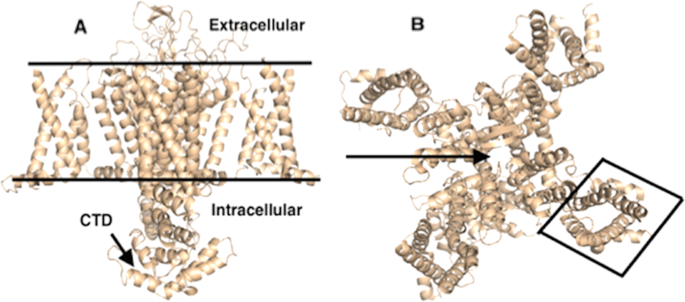当前位置:
X-MOL 学术
›
Eur. J. Hum. Genet.
›
论文详情
Our official English website, www.x-mol.net, welcomes your
feedback! (Note: you will need to create a separate account there.)
Using an integrative machine learning approach utilising homology modelling to clinically interpret genetic variants: CACNA1F as an exemplar.
European Journal of Human Genetics ( IF 3.7 ) Pub Date : 2020-04-20 , DOI: 10.1038/s41431-020-0623-y Shalaw R Sallah 1, 2 , Panagiotis I Sergouniotis 2 , Stephanie Barton 2 , Simon Ramsden 2 , Rachel L Taylor 2 , Amro Safadi 1 , Mitra Kabir 1 , Jamie M Ellingford 2 , Nick Lench 3 , Simon C Lovell 1 , Graeme C M Black 1, 2
European Journal of Human Genetics ( IF 3.7 ) Pub Date : 2020-04-20 , DOI: 10.1038/s41431-020-0623-y Shalaw R Sallah 1, 2 , Panagiotis I Sergouniotis 2 , Stephanie Barton 2 , Simon Ramsden 2 , Rachel L Taylor 2 , Amro Safadi 1 , Mitra Kabir 1 , Jamie M Ellingford 2 , Nick Lench 3 , Simon C Lovell 1 , Graeme C M Black 1, 2
Affiliation

|
Advances in DNA sequencing technologies have revolutionised rare disease diagnostics and have led to a dramatic increase in the volume of available genomic data. A key challenge that needs to be overcome to realise the full potential of these technologies is that of precisely predicting the effect of genetic variants on molecular and organismal phenotypes. Notably, despite recent progress, there is still a lack of robust in silico tools that accurately assign clinical significance to variants. Genetic alterations in the CACNA1F gene are the commonest cause of X-linked incomplete Congenital Stationary Night Blindness (iCSNB), a condition associated with non-progressive visual impairment. We combined genetic and homology modelling data to produce CACNA1F-vp, an in silico model that differentiates disease-implicated from benign missense CACNA1F changes. CACNA1F-vp predicts variant effects on the structure of the CACNA1F encoded protein (a calcium channel) using parameters based upon changes in amino acid properties; these include size, charge, hydrophobicity, and position. The model produces an overall score for each variant that can be used to predict its pathogenicity. CACNA1F-vp outperformed four other tools in identifying disease-implicated variants (area under receiver operating characteristic and precision recall curves = 0.84; Matthews correlation coefficient = 0.52) using a tenfold cross-validation technique. We consider this protein-specific model to be a robust stand-alone diagnostic classifier that could be replicated in other proteins and could enable precise and timely diagnosis.
中文翻译:

使用综合机器学习方法,利用同源建模来临床解释遗传变异:以 CACNA1F 为例。
DNA 测序技术的进步彻底改变了罕见疾病的诊断方法,并导致可用基因组数据量急剧增加。要充分发挥这些技术的潜力,需要克服的一个关键挑战是精确预测遗传变异对分子和有机体表型的影响。值得注意的是,尽管最近取得了进展,但仍然缺乏强大的计算机工具来准确地赋予变异临床意义。 CACNA1F 基因的遗传改变是 X 连锁不完全先天性静止性夜盲症 (iCSNB) 的最常见原因,这是一种与非进行性视力障碍相关的疾病。我们结合遗传和同源建模数据来生成 CACNA1F-vp,这是一种计算机模型,可区分疾病相关的良性错义 CACNA1F 变化。 CACNA1F-vp 使用基于氨基酸特性变化的参数来预测对 CACNA1F 编码蛋白(钙通道)结构的变异影响;这些包括大小、电荷、疏水性和位置。该模型为每个变异生成一个总体评分,可用于预测其致病性。使用十倍交叉验证技术,CACNA1F-vp 在识别疾病相关变异方面优于其他四种工具(接受者操作特征和精确回忆曲线下的面积 = 0.84;马修斯相关系数 = 0.52)。我们认为这种蛋白质特异性模型是一个强大的独立诊断分类器,可以在其他蛋白质中复制,并且可以实现精确和及时的诊断。
更新日期:2020-04-24
中文翻译:

使用综合机器学习方法,利用同源建模来临床解释遗传变异:以 CACNA1F 为例。
DNA 测序技术的进步彻底改变了罕见疾病的诊断方法,并导致可用基因组数据量急剧增加。要充分发挥这些技术的潜力,需要克服的一个关键挑战是精确预测遗传变异对分子和有机体表型的影响。值得注意的是,尽管最近取得了进展,但仍然缺乏强大的计算机工具来准确地赋予变异临床意义。 CACNA1F 基因的遗传改变是 X 连锁不完全先天性静止性夜盲症 (iCSNB) 的最常见原因,这是一种与非进行性视力障碍相关的疾病。我们结合遗传和同源建模数据来生成 CACNA1F-vp,这是一种计算机模型,可区分疾病相关的良性错义 CACNA1F 变化。 CACNA1F-vp 使用基于氨基酸特性变化的参数来预测对 CACNA1F 编码蛋白(钙通道)结构的变异影响;这些包括大小、电荷、疏水性和位置。该模型为每个变异生成一个总体评分,可用于预测其致病性。使用十倍交叉验证技术,CACNA1F-vp 在识别疾病相关变异方面优于其他四种工具(接受者操作特征和精确回忆曲线下的面积 = 0.84;马修斯相关系数 = 0.52)。我们认为这种蛋白质特异性模型是一个强大的独立诊断分类器,可以在其他蛋白质中复制,并且可以实现精确和及时的诊断。











































 京公网安备 11010802027423号
京公网安备 11010802027423号